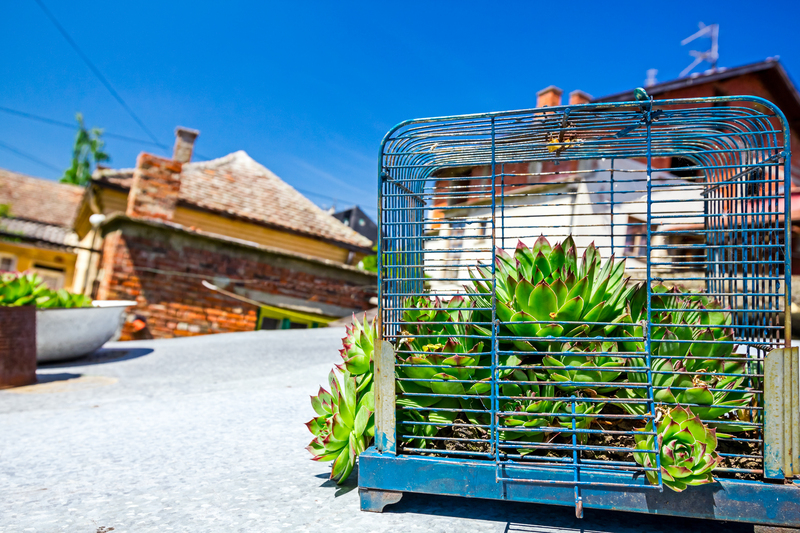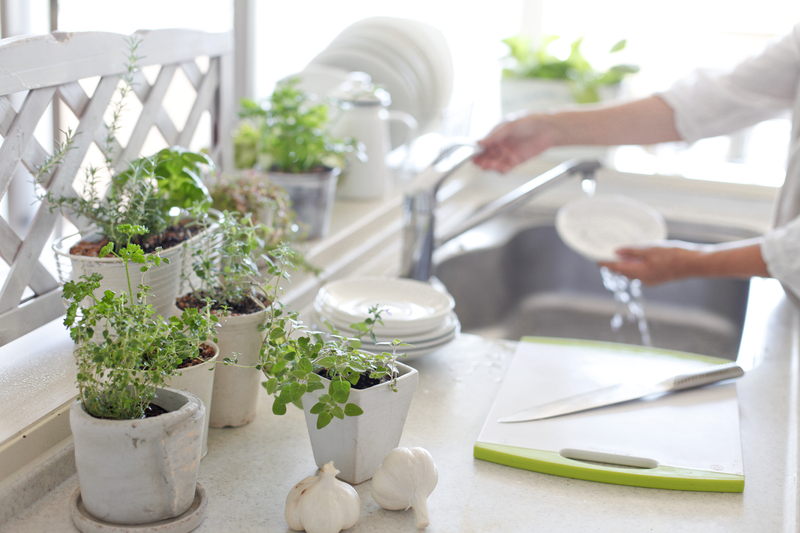Thriving Gardens Start Here: 9 Must-Know Tips for Novice Gardeners
Posted on 07/09/2025
Thriving Gardens Start Here: 9 Must-Know Tips for Novice Gardeners
If you're stepping into the captivating world of gardening, your excitement is justified. Creating a lush, beautiful space is both rewarding and therapeutic. But as a beginner, you might be wondering: How can I ensure my new garden flourishes? This comprehensive guide details nine essential gardening tips for novices. Follow these expert strategies, and you'll be well on your way to cultivating a thriving garden in no time!
1. Understand Your Growing Zone
Before you plant anything, it's crucial to determine your region's growing zone or garden hardiness zone. This zone tells you which plants are most likely to thrive in your area based on temperature and climate.
- Consult the USDA Plant Hardiness Zone Map for North America or local equivalents worldwide.
- Choose plants labeled for your zone to reduce the risk of failure.
- Pro Tip: Nurseries and gardening centers often organize plants by suitability for local zones.
Why This Matters for a Flourishing Garden
Planting species outside their recommended zone can result in stunted growth or even plant death. By understanding your climate, you set a solid foundation for your garden to thrive.

2. Select the Right Spot for Your Garden
Location is everything. Plants have individual needs for sunlight, shade, and air circulation.
- Observe your yard throughout the day to see which areas get full sun (6+ hours), partial sun, or full shade.
- Vegetable gardens generally need plenty of sunlight, while shade-loving plants such as hostas and ferns do best under dappled light.
- Ensure your chosen spot has good air flow and is not prone to flooding after rain.
Setting Your Garden Up for Long-Term Success
A garden in a favorable spot reduces problems with pests and diseases and helps your plants establish strong roots. A thriving garden always starts with the right environment!
3. Do a Soil Test & Improve Your Soil
Healthy soil is the secret behind lush, productive gardens. Start by:
- Using a soil test kit (available at garden centers) to check your yard's soil pH and nutrient levels.
- Looking for soil that is loose, crumbly, and rich in organic matter.
- If your soil is clay-heavy, compacted, or very sandy, amend it with compost or well-rotted manure.
Did you know? Most vegetables and flowers prefer neutral to slightly acidic soil (pH 6.0 to 7.0).
Nourishing Your Garden from the Ground Up
Improved soil structure nurtures plant roots, supports beneficial microbes, and retains essential nutrients. By prioritizing soil quality, you're laying the groundwork for a vibrant and thriving garden.
4. Choose Easy-to-Grow Plants
For new gardeners, select plants for beginners that will bring you early success and confidence.
- Sunflowers, zinnias, and marigolds grow easily from seed and are forgiving of minor mistakes.
- Herbs like basil, mint, and parsley adapt well to a variety of conditions and add flavor to your kitchen.
- Consider perennials such as daylilies or black-eyed Susans for returns year after year.
Fast Results for a Confidence Boost
Seeing your garden come to life quickly inspires ongoing care and experimentation. Always look for "easy-care" or "for beginners" labels when shopping for seeds or plants.
5. Master Watering Wisely
Watering is vital in building a robust garden, but it's also easy to get wrong. Here's how to hydrate your plants effectively:
- Water deeply and less frequently--so roots grow deep and strong.
- Early morning is the best time to water, reducing evaporation and fungal diseases.
- Avoid wetting the foliage; aim water at the root zone for best results.
- Use mulch to retain soil moisture and regulate temperature.
Signs of Proper Hydration
Plants should appear turgid and vibrant, without limp or yellowing leaves. Well-watered gardens are resilient, productive, and better able to resist pests and blight.
6. Feed Your Plants with the Right Fertilizer
Even rich soil can benefit from occasional feeding. The key is to choose the right fertilizer for your garden's needs.
- Vegetables and annual flowers often respond well to balanced, slow-release fertilizers.
- Organic options like compost tea or fish emulsion are effective and environmentally friendly.
- Avoid over-fertilizing; more isn't always better and can harm your plants.
Growing Strong, Healthy Plants
Regular yet moderate feeding ensures lush foliage, prolific blooms, and strong roots--the hallmarks of a thriving garden.
7. Mulch for Moisture and Weed Control
Mulch is a novice gardener's best friend! It offers numerous benefits:
- Retains soil moisture, reducing the need for frequent watering.
- Keeps weeds at bay, saving time and effort.
- Regulates soil temperature, protecting roots from extreme heat or cold.
- Adds organic matter as it breaks down, continuing to enrich your garden bed.
Mulch Choices for Every Garden
Common mulch options include shredded leaves, bark chips, straw, or grass clippings. Spread a 2-3 inch layer around plants, avoiding direct contact with stems.
8. Stay Vigilant: Watch for Pests and Diseases
Even the best beginner gardens are susceptible to insects and blight. Regular checks help stop problems before they spread.
- Examine plants for signs of damage, discoloration, or holes in leaves.
- Remove weeds and debris, which can harbor pests.
- Encourage beneficial insects like ladybugs or lacewings to keep harmful bugs in check.
Integrated Pest Management (IPM)
Whenever possible, use non-toxic solutions such as handpicking pests, using insecticidal soaps, or installing row covers. Minimal intervention keeps your garden's natural balance while protecting pollinators.
9. Be Patient, Learn, and Celebrate Small Wins
Perhaps the most vital tip for creating lush, successful gardens is simple: patience. Plants take time to grow, and successes may be gradual.
- Keep a gardening journal to track progress, mistakes, and triumphs.
- Celebrate milestones, from first sprouts to blooming flowers or your initial harvest!
- Learn from each season and adjust your approach.
The Joy of Gardening Journey
No two thriving gardens are the same. Embrace mistakes as opportunities for learning, and delight in every new discovery. Over time, your confidence and skill will flourish alongside your plants.

Frequently Asked Questions about Thriving Gardens for Beginners
-
What's the easiest vegetable to grow for beginners?
Lettuce, radishes, and green beans are all beginner-friendly and quick to harvest. -
How do I know if my garden is getting enough sunlight?
Track the sun's pattern over your garden bed for a few days, noting hours of direct sun. Most vegetables need 6+ hours daily. -
Do I need special tools as a new gardener?
Basic tools like a trowel, pruners, watering can, and gloves are sufficient to start. Invest in quality over quantity. -
How often should I water my garden?
Typically, gardens need 1" of water per week, but this varies by plant and weather. Check the soil for moisture before watering.
Conclusion: Begin Your Thriving Garden Today!
Building a lush, prosperous garden isn't about instant perfection--it's about continuous learning, observation, and connecting with nature. By mastering these 9 must-know gardening tips, even novice gardeners can set themselves up for a season--or lifetime--of beauty and bounty.
Start small, stay curious, and watch your thriving garden blossom! With each passing day, you'll gain knowledge and confidence as your outdoor sanctuary grows.
For more actionable advice and garden inspiration, bookmark this guide and share it with fellow beginner gardeners. Your journey to a thriving, beautiful garden truly does start here!

